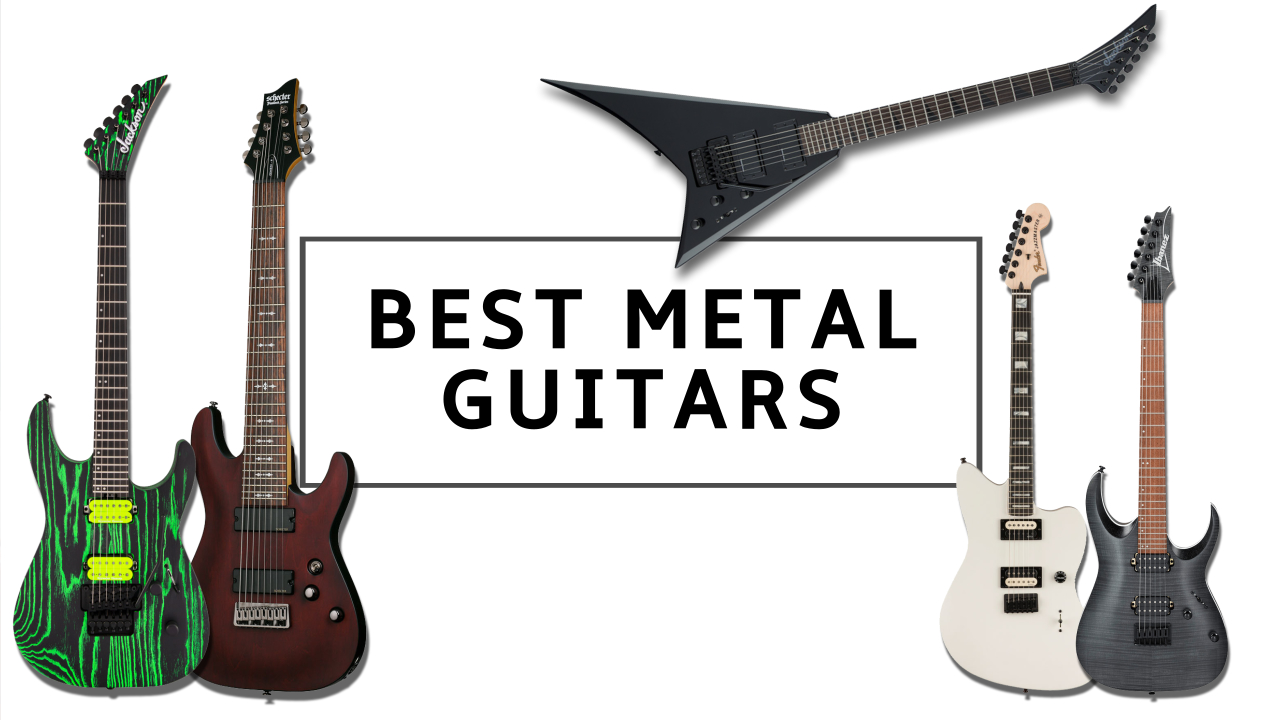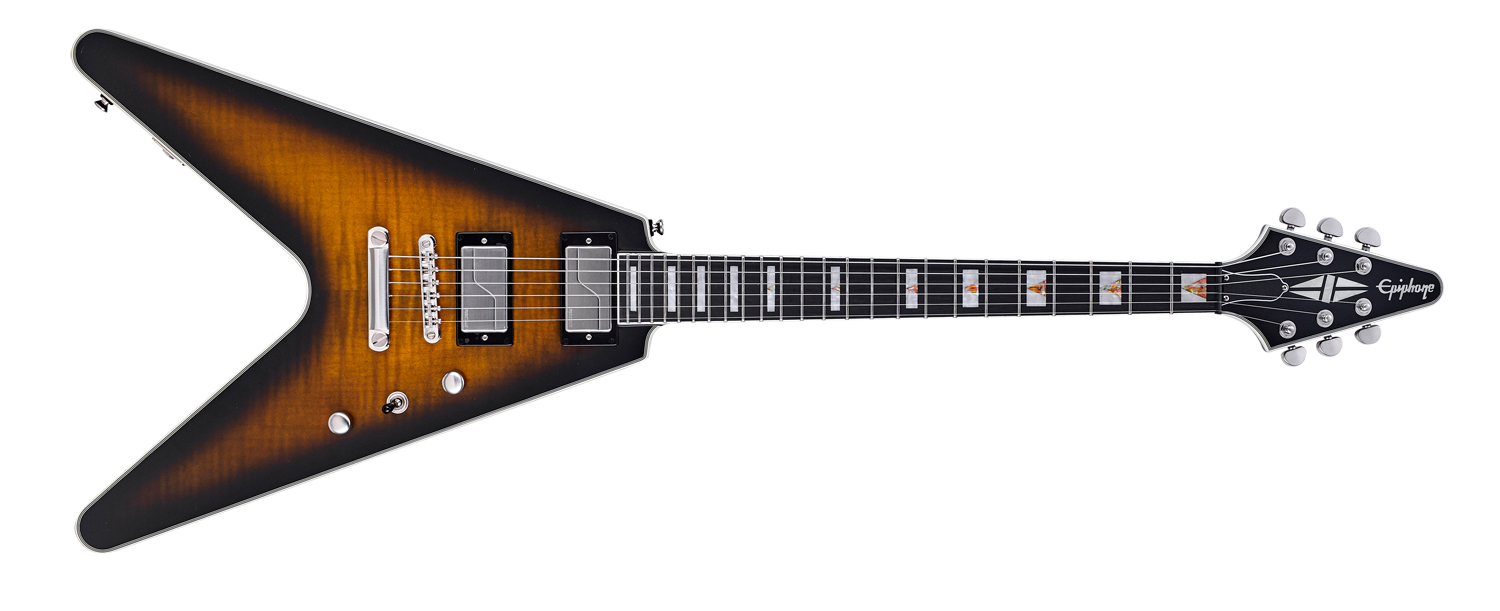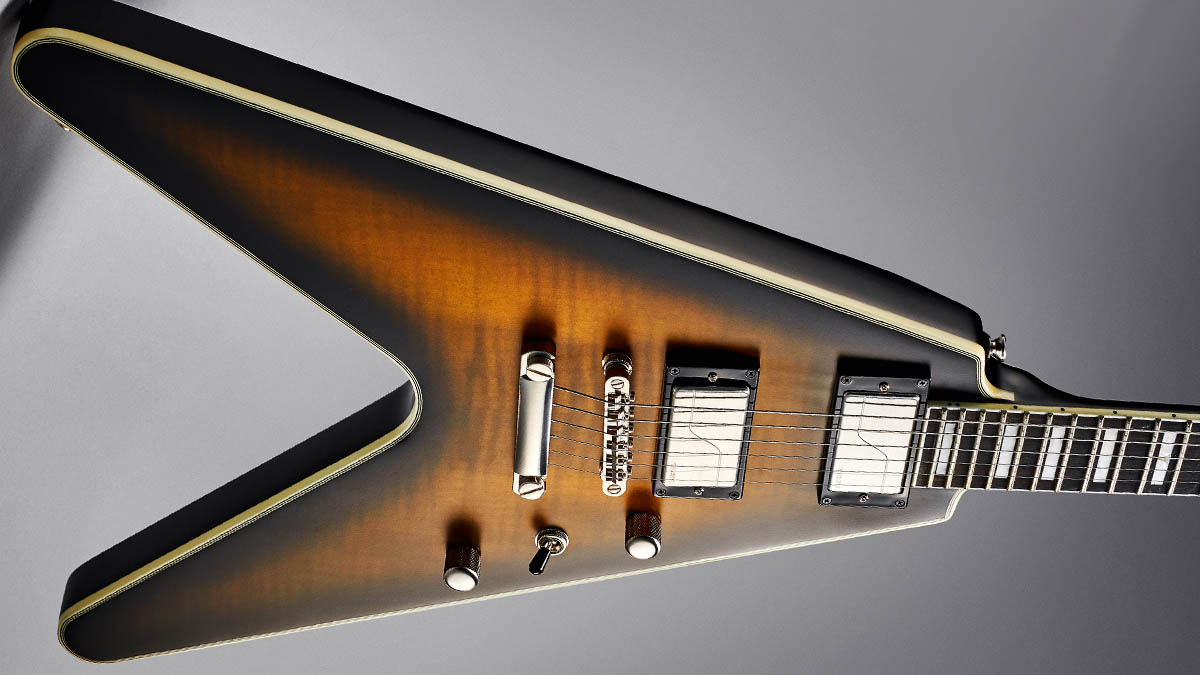Guitar World Verdict
Attention to detail allied to ambition – it's a lot of spec for the money – and a very playable neck profile makes the Epiphone Prophecy V one of the best guitars for metal on the market today. Just so long as you don't want to play it seated.
Pros
- +
The asymmetric neck profile balances speed with comfort.
- +
Premium pickups and hardware.
- +
Top value.
- +
Flawless finish and quality build.
Cons
- -
The V shape can be impractical.
- -
A premium passive humbucker option would be incredible.
You can trust Guitar World
The distance between Gibson’s entry-level US build and a top-of-the-range, Chinese-built Epiphone is closing all the time. Take the Epiphone 1959 Les Paul Standard, a quite stunning collaboration with the Gibson Custom Shop that is arguable better dressed than a Les Paul Tribute.
Or take this Prophecy Flying V, which takes the high-road when it comes to spec. Here we’ve got a mahogany body with a AAA flame maple veneer – like the ’59 LP – though it is also available in Aged Satin Black. The Prophecy V has a set, mahogany neck, carved into Gibson’s Asymmetrical Slim Taper profile.
Originally the asymmetrical carve was an accident, with variances on hand-carved necks meaning some had an ever-so-slightly fatter profile on the bottom-strings’ side and a thinner profile down under the top strings. But then it became a feature, offering the best of both worlds, speed and comfort.
The multi-play cream and black binding, MOP block with abalone triangle inlay, and the diamond inlay on the headstock lend the Prophecy V a Custom Shop vibe, its satin finish making it one tactile instrument.
The hardware is quality, too. There’s a LockTone tune-o-matic and stop-bar tailpiece, locking Grover tuners; both finished in brushed nickel, matching the volume and tone controls. The Graph Tech NuBone nut is perfectly cut.
Now, if you’re thinking that this spec is pretty darn pro, then the two Fluence Custom Voiced humbuckers should confirm your suspicions. Very much the 21st-century pickup, the active Fluence ’buckers are multi-voiced and powered by 9V battery that’s hidden in a compartment on the rear of the instrument.

Engage the push-pull on the volume control to toggle between a high-output modern humbucker and a classic Burstbucker/PAF-style voicing, while a push-pull on the tone control activates a single-coil mode. If you’ve tuned in for the high-gain humbucker, you’ll be pleased to know that it lends itself to some ripping metal tones.
Indeed, the Fluence skews modern. Those weaned on Sabbath and Priest might prefer the more open PAF tones, which go very nicely with some JCM800 crunch or fuzz box and clean up nicely, while the single-coil mode is a good option. What more could you need?
Remember, however, that the Flying V design is exceptionally balanced on the strap but is awkward when played seated. Just don’t jam your elbow into it like Dave Davies would have – this one’s more War Ensemble than Waterloo Sunset...
Specifications

- PRICE: $899, £799, €919
- BODY: Mahogany with AAA flame maple veneer
- NECK: Mahogany with Asymmetrical Slim Taper profile, 12” radius
- SCALE: 628mm (24.72”)
- FINGERBOARD: Ebony
- FRETS: 22
- PICKUPS: 2x Fluence Custom Voiced Humbuckers
- CONTROLS: 1 x volume with push/pull, 1 x tone with push/pull, 3-way pickup switch
- HARDWARE: LockTone Tune-O-Matic with LockTone stop-bar, Grover Locking Rotomatic tuners,brushed nickel
- LEFT-HANDED: No
- FINISH: Yellow Tiger Aged Gloss (reviewed), Black Aged Gloss
- CONTACT: Epiphone
Jonathan Horsley has been writing about guitars since 2005, playing them since 1990, and regularly contributes to publications including Guitar World, MusicRadar and Total Guitar. He uses Jazz III nylon picks, 10s during the week, 9s at the weekend, and shamefully still struggles with rhythm figure one of Van Halen’s Panama.
“It holds its own purely as a playable guitar. It’s really cool for the traveling musician – you can bring it on a flight and it fits beneath the seat”: Why Steve Stevens put his name to a foldable guitar
“Finely tuned instruments with effortless playability and one of the best vibratos there is”: PRS Standard 24 Satin and S2 Standard 24 Satin review













